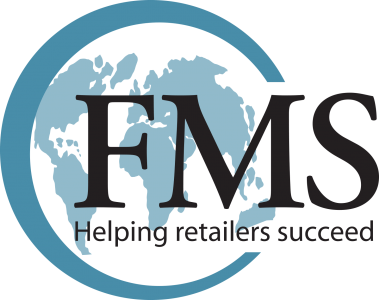FMS Solutions Advises Grocers on How to Protect Their Margins
FORT LAUDERDALE, Fla., May 28, 2020 (Newswire.com) - FMS Solutions is sharing valuable insight with grocers on how to protect their margins in the current inflammatory environment. There are several reasons why monitoring margins is critical for grocers right now.
CPI food-at-home prices are rising. Besides, labor and supply costs are on a steady incline. Both of these factors can make price change delays on the shelf costly. Furthermore, making price changes on the corporate or wholesale level does not ensure they will get released at the store level and receive updated tags.
Scan for Incorrect Pricing and Unit Tags
During this uncertain time, inaccuracies between the prices on tags and scans can erode customer trust. Grocers can stay on top of price increases by implementing a schedule of regular aisle scan tests. They report the results to management, ensuring that pricing and unit tag errors are caught and corrected in a timely fashion.
Review These Reports to Monitor Pricing
There are a couple of different factors grocers should take into account to accurately track pricing changes and cost increases in the back office. The wholesaler sets the price - A spot check for errors is the only course of action necessary. The grocer maintains their pricing files - They must review three different types of reports.
In the latter case, the reports that will help groceries manage their gross margins are total adverse reports, gross margins by category, and cost increase sheets.
The ideal result of negative gross reports is a lack of data, except for vendor-provided funding outside of costs used for hot ads. It is essential to run these reports regularly. Processing gross margins by category reports involve reviewing the margins according to the category for consistency in category goals.
Grocers should require buyers to provide cost increase sheets to their pricing staff. Developing a system to log the sheets from the buying department, along with a sign-off process once they are complete, is critical.
Although following these strategies is highly recommended, sales should always remain the top priority for grocers. Strong sales can strengthen many weaknesses and solve many issues. Independent grocers, in particular, should focus on sales, as the leading 25 percent of retailers average a larger per-transaction size of 16 percent over the average independent grocer.
Grocers should not stop at national brand items with increasing prices. It is also imperative to monitor their private label price parity and the parity in the cost of different size products as prices rise. National retailers’ private brands sales penetration is 7% to 10% higher than average independents; this a competitive disadvantage and gross profit opportunity.
Food, a high influential factor in the industry, is experiencing rapid growth. By following all of these tips, grocers will give themselves the advantage they need to benefit from this trend.
The declining vendor promotional funds should be included as another critical factor in protecting gross margins. As the pandemic hit, vendors took quick action to pull back promotional funding levels. A natural economic shift in supply vs. demand, why discount products when they can't manufacture it fast enough?
This reduction in promotional spending has a hidden impact to gross margin erosion; all of the restock will be done at a higher net landed cost of products and a small portion of vendor trade funds (pass on allowance programs) are kept by the retailers to enhance gross profit. Also, retailers need to be paying close attention to vendor advertising funds, which are used to off-set retailers' weekly advertising spends (print ads, TV, and other media).
"It is clear that in the short term, grocery retailers are experiencing a huge influx of business as a result of consumers stocking up in essential products. Also, we see a shift of food-away-from-home dollars (restaurants) to food-at-home dollars (grocery). On average, we have seen a 30% increase in overall same-store sales just for March. The real question is, will this impact the long-term trend?" FMS Solutions CEO Robert Graybill said.
According to Graybill, grocers should expect unemployment increases and the downward effect on the economy to continue to further the shift to grocery stores. Consumers with lost wages will need to tighten their belts. Graybill anticipates that grocers will probably see a change to cost-saving measures such as private labels within the store itself. However, many consumers will return to their habits of eating out more frequently as the economy recovers.
"In summary, the short-term increases will reduce, but there will be a long-term positive impact on the grocer's top line until the economic impacts become more muted," Graybill concluded.
About FMS Solutions
FMS Solutions offers accounting services that empower retailers to make informed operational decisions on a daily basis. The company gives users a premier suite of integrated software solutions that provide a 360-degree view of how each retailer’s store is performing in all of its accounting processes. The technology FMS Solutions designed for independent grocery store retailers is highly adept at keeping pace with external developments. It was designed with unique features that stand the test of time and remain user-friendly through any number of iterations. Learn more at https://www.fmssolutions.com/eng/.
Source: FMS Solutions
